聚酰胺-酰亞胺(PAI)是高性能聚合物,將優異的高溫強度與低溫韌性和衝擊強度相結合,同時作為無定形聚合物對各種常見化學藥品均具有出色的耐化學性。 它們與另外兩種高溫芳族酰亞胺聚合物(聚醚酰亞胺(PEI)和聚酰亞胺(PI))密切相關。 最受認可的聚酰胺酰亞胺聚合物是Torlon,它是Amoco在1970年代引入的,它是一種低分子聚合物的延伸,該聚合物可增強含氟聚合物在炊具(如Silverstone®)和金屬絲塗層中的附著力。 聚酰胺酰亞胺是熱塑性的,可以像PEI一樣進行熔融加工和回收,但具有更高的強度,剛度和耐磨性。 與不能像熱塑性塑料一樣進行熔融加工的PI不同,PAI提供了熔融加工的靈活性,在強度,剛度和耐磨性之間取得了更好的平衡,這通過二次熱固化得以最大化。 與在室溫下加上PEEK的大多數其他熱塑性塑料相比,PAI在400°F時具有更高的強度,並且具有類似於鋁的線性熱膨脹係數(CLTE)。 這套獨特的性能加上熔體可加工性使其非常適合一些苛刻的行業,包括:
在這些行業中,Torlon扮演著許多角色,因為其熔融加工性能為製造商提供了轉換選擇,以生產高公差的複雜形狀。
非晶熱塑性
聚酰胺酰亞胺(PAI)是一種無定形的不透明熱塑性塑料,可以使用常規的注塑成型,擠出或壓縮成型技術進行熔融加工。 Solvay Specialty Polymers是製造PAI樹脂的全球領導者,商標名為Torlon,全球有不到100家公司將其轉變成各種零件。 擠出形狀由Drake Plastics和Mitsubishi Chemical生產,他們提供加工成最終零件的棒,板,管和型材。 全球只有不到五家公司將Torlon壓縮成非常大的形式,用作大型渦輪壓縮機的密封件。 儘管Torlon是非晶態聚合物,但由於其在剛度,韌性,強度和熱性能之間的平衡,同時具有出色的耐化學性和尺寸穩定性,Torlon在熱塑性塑料行業中居於領先地位。
加工挑戰
在對Torlon進行熔融加工時,其高玻璃化轉變溫度,在寬的加工剪切範圍內的非牛頓流以及其非晶態形態都帶來了許多重大挑戰。 其中最具挑戰性的是:
- 加工溫度高於600 F的狹窄加工窗口
- 熔體粘度對溫度和剪切速率敏感
- 作為一種縮聚聚合物,PAI對水分高度敏感,在熔融加工過程中必須進行徹底乾燥和維護,以防止分子量和熱機械性能下降
- 在500 F下熱固化20天或更長時間,以優化熔融加工後的性能
為了獲得最佳性能,必須在嚴格控制的條件下對PAI進行處理,然後對其進行熱固化,以通過高達500 F的分階段熱循環來提高分子量。固化過程完成了酰亞胺化過程,並通過縮聚反應形成了分子量。 水是冷凝副產物,必須除去水才能提高MW和Tg。 由於縮聚反應是雙向反應,因此去除水以促進反應至關重要。 如果水的溫度等於或高於玻璃化轉變溫度,則會發生水解和性能損失。
在過去的50年中,專門的公司已經學會處理Torlon PAI。 與大多數熱塑性塑料相比,它需要更多的工藝專業知識;因此,它沒有像PEEK等其他高性能聚合物那樣被廣泛採用。 但是,工程師和設計師有許多轉換選擇來採購聚酰胺酰亞胺成分,從而利用了這種聚合物的獨特性。
Part Processing Options
加工
– 聚醯胺醯亞胺零件可以從形狀加工成複雜的設計,以及從未填充聚醯胺醯亞胺到玻璃和碳纖維增強PAI的八個獨特等級的極嚴格公差,以及低摩擦和磨損等級。 Tight tolerances with smooth surfaces are characteristics of machined PAI. Machining is a cost-effective choice when production quantities are low and precision high since no upfront tooling is required. It is also ideal when a component’s design is still under development. Stock shapes for machining come from a range of melt processing methods including extrusion, compression molding and/or injection molding.
- Extrusion offers the best balance of real-world properties.
- Rod diameters from .125-10 inches in lengths up to 8 feet
- Tubes with OD/ID combinations of 1” x .5” to 7.625” x 3.5”
- Plates in widths up to 14 inches wide and thicknesses up to 1.75”
- Compression molded shapes – Ideal for large rings (up to 36-inch diameter), and unique blends.
- Injection Molded Shapes – Best for thin-wall tubes and near net shapes (NNSs)
注塑成型
– Torlon 聚醯胺-醯亞胺可以使用配備高溫加熱器、足夠夾緊力(4 噸/2 的投影零件面積)和適合注塑的料筒的傳統成型設備進行注塑成型,最終成型。 The injection screw must be a low compression screw with a 1-1.5:1 compression ratio and the machine controls capable of precision fill speed and pressure adjustments. One-piece screws are required, check valve screw tips may not be used. Older hydraulic machines may benefit from having gas assist injection capabilities.
The low flow characteristics of molten polyamide-imide means it is nearly impossible to achieve the high gloss finish possible with other thermoplastics. The melt flows into the mold cavity as “rope” that fuses together during the pack and hold cycle. The surface finish of molded Torlon has often been compared to metal castings or even wood, displaying distinct boundaries between adjacent melt fronts. The appearance is only on the surface, and when machined away exposes fully dense uniform PAI below the skin. Additionally, the high viscosity and low shrink characteristics of melted PAI make it challenging to mold thin cross-sections (below .030”) especially when the feature length is greater than 1”. Undercuts require side actions and most parts benefit from large sprues, runners and gates that are shorter in length than other polymers. Hot runner systems may not be used but hot sprues may be incorporated. Mold temperature control is limited to utilizing hot oil or electric heater element circuits. Steam is seldom used.
Resin must be thoroughly dried prior to molding using desiccant dryers with a dew point of -40°F. Moisture levels before molding are recommended to be below 500ppm and are strongly encouraged to verify before running.
Before molded parts can be used or machined, they need to be cured. This cure process is critical for molded Torlon parts to develop full properties, especially strength at temperature and toughness. This thermal cycle varies with cross section of the parts but generally ranges from 17 to 21 days. The importance of the cure cycle cannot be overstated. The typical cure cycle involves a series of 24-hour steps (5-7) between 300°F and 485°F before parts are exposed to 500°F for 10 days.
Solvay typically approves processors before allowing them to process Torlon polyamide-imide. Certified Torlon processors are processors vetted by Solvay who have demonstrated the ability to process this unique material. They use programmable, PLC controlled furnaces and have the know-how to deliver the properties of this unique material.
